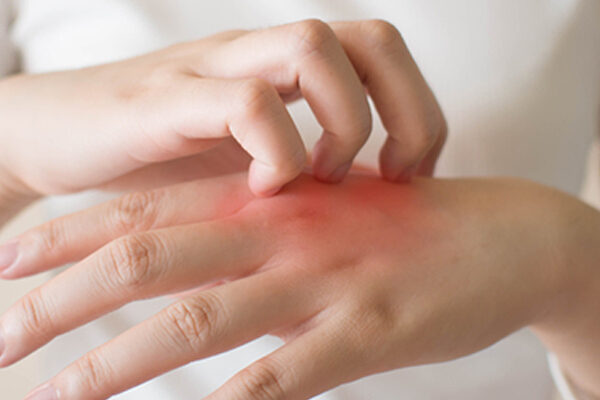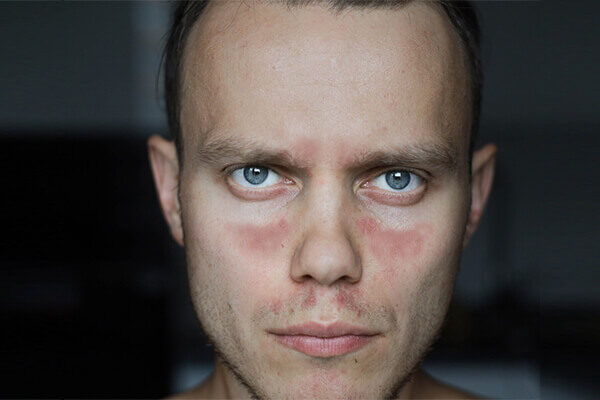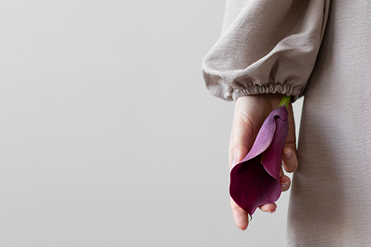Updated on August 3, 2023
Introduction
If you notice rapidly appearing and vanishing red or skin-colored bumps, it is improbable that they are ordinary insect bites. These bumps might be hives, medically termed urticaria, and the associated itching can vary from mild to intense. Around 20% of individuals may experience hives at some point in their lives. Itching in hives can be aggravated by scratching, alcohol consumption, physical activity, and emotional stress. (1)
Many mothers experience a rash after pregnancy. This common occurrence is known as postpartum rash or hives, which can be bothersome and cause distress.
If you suffer postpartum rashes or other dermatological disorders, Revival Research Institute investigates a range of novel therapies for skin conditions through its dermatology clinical trials that may be able to help.
What is Postpartum Rash?
Postpartum hives, also known as postpartum rashes, result in intense itching. These hives manifest as red or skin-colored itchy rashes, commonly appearing on the arms, back, and feet, referred to as wheels, nettle rash, or welts. While the condition is most prevalent in women after childbirth, it can also occur for reasons unrelated to pregnancy. The name “Postpartum Hives” comes from the fact that it develops after delivery.
” Find out more about Postpartum Hives. “
A postpartum rash occurs due to several factors like hormonal, psychological, and immune system changes. Pregnancy and childbirth may be factors in developing postpartum rashes.
These rashes or hives can be an uncomfortable experience. However, they are not contagious and usually resolve on their own or with home remedies or topical treatments.
This is usually what postpartum hives look like:
- Skin rash on the face, neck, chest, stomach, arms, legs, or anywhere on the body
- Single welts on the skin
- Large flat bumps or patches
- Pinkened or skin-colored bumps
- Skin bumps that blanche or turns white when pressure is applied to them
- Flat, swollen nodes on the skin that can run together
- Rough skin texture that looks like eczema
This condition can often be confused with pruritic urticarial papules and plaques of pregnancy (PUPPP), which is one of the most common diseases associated with pregnancy. In most cases, the skin lesions develop in the third trimester which makes it different from postpartum rashes that appear after pregnancy. (4)
Hives are triggered by the immune system’s release of histamine in response to perceived threats (allergens), which helps protect the body from infection and illness. These allergens may include:
- Medication
- Food
- An insect sting or bite
- Latex
- Pet dander
- Plants and pollen
Allergic reactions are often worse during pregnancy in one-third of people who have asthma and allergies. (5)
Hives can also develop due to the following:
- Stress
- Overreaction to sweat, heat, or cold
- Sunlight
- Pressure on the skin
- Infection
- Medical treatment, such as a blood transfusion
The risk of developing hives rises if they:
- Are women of African American heritage
- Have eczema
- Smoke
A rare case study from 2022 indicates that postpartum hives during breastfeeding may be an allergic reaction to elevated levels of prolactin, a hormone essential for milk production. (6)
It is essential to know that hives are not contagious and cannot be transmitted to infants or other individuals.
How to Treat Postpartum Rash?
Having a well-prepared plan for postpartum hives treatment, even if the rashes are minor, can prove highly beneficial in managing and alleviating postpartum itching effectively.
Medical Treatment for Postpartum Hives
Medical treatment for hives may include: (7)
- Over-the-counter (OTC) or prescription antihistamines
- Corticosteroids like prednisone
- Immune modulators
An epinephrine auto-injector might be necessary if signs of anaphylaxis, such as difficulty breathing or swollen tongue or lips, appear.
Bromocriptine, a dopamine antagonist that reduces prolactin levels, can be effective if high prolactin levels are the cause of the hives.
Antihistamines and glucocorticoids can also provide relief. A 2018 study indicated the effectiveness of herbal medicine and acupuncture in treating postpartum hives unresponsive to antihistamines or topical steroids. (8)
For breastfeeding individuals, consulting a healthcare professional is essential to ensure the safety of medications or alternative treatments during lactation.
Home Remedies for Postpartum Hives
At home, one can find symptomatic relief by:
- Apply cool compresses to the affected skin for 10–20 minutes as needed.
- Using anti-itch creams on the skin.
- Avoid scratching the hives.
- Take lukewarm baths with colloidal oatmeal.
- Wear loose, comfortable clothing made of 100% cotton.
- Bathing in lukewarm water and refraining from scrubbing the skin.
- Use fragrance-free soaps, which are less likely to irritate the skin.
- Tracking symptoms and identifying triggers.
How long does Postpartum Rash last?
Hives have the ability to resolve on their own within a few days or weeks. If hives persist for 6 weeks or more, they may be considered chronic, and it is advisable to consult a doctor to rule out any underlying medical conditions causing the hives. (9)
About Revival’s Chronic Spontaneous Urticaria – Hives Study
Revival Research Institute is currently conducting phase 3 clinical trials on an experimental drug aimed at individuals suffering from chronic hives and itching, even after using allergy medications. If you meet the criteria for this research study and choose to participate, there is a 50% chance of receiving either the study drug or an FDA-approved treatment for chronic spontaneous urticaria. The study doctor will provide detailed information about the administration schedule and frequency of the study drug. (10)
Throughout the study, both you and the study doctor will be unaware of which treatment you are receiving during assessment points. However, if necessary, the study doctor may access this information. The study drug will be administered through subcutaneous injections, using a short needle to inject the drug into the tissue layer between the skin and muscle.
You may be eligible to participate if you:
- Are 18 years or older
- Have a diagnosis of Chronic Spontaneous Urticaria (Chronic Hives)
- Have itching and wheals for eight consecutive weeks, despite anti-allergy treatments
Summary
Postpartum hives, or rashes, are raised, itchy skin bumps caused by the release of histamine in response to numerous factors, such as allergic reactions, stress, or hormonal changes. Managing hives can often be achieved through home remedies, including cool compresses and oatmeal baths. Medical treatments may involve antihistamines, steroid creams, or immune modulators, which can be obtained over the counter or with a prescription.
Being a leader in healthcare clinical trials, Revival Research Institute conducts chronic spontaneous urticaria clinical trials that may help people manage long-term urticaria.





